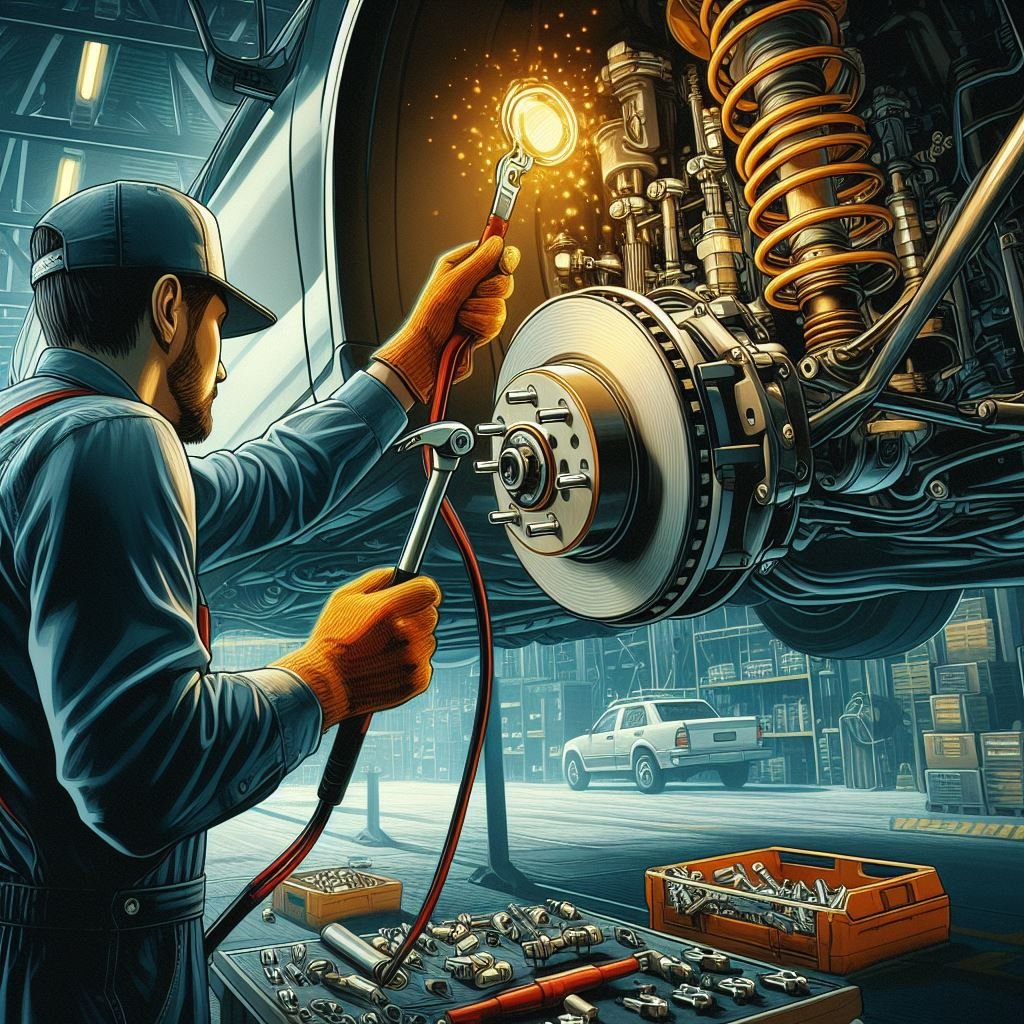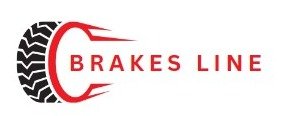As you hit the brakes, your car suddenly starts swerving to the side. You quickly realize that your rear brake line has snapped, and you’re left with a potentially dangerous situation. This scenario is all too common for many drivers, highlighting the importance of properly maintaining your vehicle’s brake system.
In this blog, we’ll dive into everything you need to know about rear brake lines, from their function to common issues and how to spot them. So buckle up and get ready to become a brake line expert, as we explore this crucial component of your car’s safety and performance.
What are Rear Brake Lines?
When it comes to the safety of your vehicle, every component plays a crucial role. One such important component is the rear brake line. This line is responsible for carrying brake fluid from the master cylinder to the rear brakes, allowing you to safely and effectively slow down or stop your vehicle.
However, over time and with regular wear and tear, the rear brake line can become damaged or corroded, jeopardizing the overall braking system of your vehicle. If you notice any signs of leakage or damage in the rear brake line, it is important to get it replaced immediately to avoid potential accidents on the road. Replacing a rear brake line is not a complex task, but it does require some basic knowledge and tools.
First, make sure you have the appropriate replacement line for your vehicle. Then, start by lifting your vehicle and securing it on jack stands to gain access to the rear brake line. Next, locate the damaged brake line and carefully loosen the fittings on both ends with a wrench.
Be sure to have a drain pan handy to catch any residual brake fluid that may leak out. Once the old line is removed, carefully install the new line and tighten the fittings securely. Bleed the brake system to remove any air bubbles and test the brakes to ensure they are functioning properly.
Regularly inspecting and maintaining your rear brake line is important for the overall safety and performance of your vehicle. It is recommended to have a professional mechanic check your braking system at least once a year to catch any potential issues before they become major problems. Remember, your rear brake line is a crucial component in keeping you and your vehicle safe on the road, so don’t neglect its maintenance.

Signs That Your Rear Brake Lines Need Attention
When it comes to your vehicle’s safety, the rear brake line plays a crucial role. This important component is responsible for transmitting hydraulic pressure to the rear brakes, allowing you to slow down or come to a complete stop. However, over time, the rear brake line can become damaged or corroded, leading to potential brake failure.
It’s important to keep an eye out for warning signs and address any issues immediately to ensure the safety of yourself and others on the road. One of the most common signs of a faulty rear brake line is a soft or spongy brake pedal. This means that there is air or fluid leaking from the brake line, causing a loss of pressure and making it difficult to brake effectively.
If you notice that your brake pedal is not as responsive as it used to be, it’s important to have your rear brake line checked by a professional mechanic. Another warning sign of a damaged rear brake line is a brake fluid leak. This can often be seen as a puddle of clear or slightly yellowish fluid under your vehicle.
Brake fluid is essential for the proper functioning of your brakes, so any leaks should be addressed immediately. If you notice a leak, it’s important to have your rear brake line inspected and replaced if necessary. In addition to these warning signs, it’s important to have your rear brake line inspected regularly as part of your vehicle’s maintenance routine.
This will help catch any potential issues before they become major problems. It’s also a good idea to have your brake fluid checked and changed regularly to ensure the proper functioning of your brakes. In conclusion, the rear brake line is a critical component of your vehicle’s braking system.
It’s responsible for transmitting hydraulic pressure to the rear brakes and allowing you to slow down or stop. It’s important to be aware of warning signs of a faulty rear brake line, such as a spongy brake pedal or brake fluid leaks, and to have it inspected regularly. By taking care of your rear brake line, you can ensure the safety of yourself and others on the road.
Replacing Your Rear Brake Lines
When it comes to your vehicle’s braking system, every component plays a crucial role in ensuring your safety on the road. The rear brake line is no exception. This essential part connects the brake caliper to the brake hose, allowing hydraulic fluid to flow and apply pressure to the brake pads.
If you notice a decrease in braking power or difficulty stopping your vehicle, it’s essential to have your brakes checked. Additionally, if you see any puddles of fluid under your vehicle, it could be a sign of a leak in the rear brake line. Spongy or soft brake pedals and a brake warning light on your dashboard are also indicators of potential rear brake line issues.
Maintaining Your Rear Brake Lines
The rear brake line is an essential component of a vehicle’s braking system. It carries brake fluid from the master cylinder to the rear brakes, allowing for smooth and efficient braking. Without a functioning rear brake line, a vehicle’s braking power would be greatly reduced, posing a danger to both the driver and other vehicles on the road.
You may be wondering, what exactly does the rear brake line do? Well, imagine trying to stop your car without pressing on the brake pedal. That’s essentially what would happen without a rear brake line. The brake pedal, when pressed, pushes brake fluid through the brake lines to the brake calipers, which then squeeze the brake pads onto the brake rotors, creating the friction needed to bring the vehicle to a stop.
But why is the rear brake line specifically important? Well, as the name suggests, it is responsible for delivering brake fluid to the rear brakes. The majority of a vehicle’s braking power comes from the front brakes, so the rear brakes may not seem as essential. However, the rear brake line plays a crucial role in ensuring balanced braking and preventing the vehicle from spinning out of control.
So, what happens if the rear brake line gets damaged or starts to leak? As mentioned earlier, it can greatly reduce the vehicle’s braking power and potentially cause a dangerous situation on the road. Signs of a damaged rear brake line include a soft or spongy brake pedal, leaking brake fluid, and reduced braking ability. If you suspect an issue with your rear brake line, it’s important to get it checked and repaired by a professional mechanic immediately.
They will be able to diagnose the problem and replace the damaged brake line to ensure your vehicle’s safety. In conclusion, the rear brake line may seem like a small component in the grand scheme of a vehicle’s braking system, but it plays a critical role in ensuring safe and effective braking. So, make sure to keep an eye on its condition and address any issues promptly for a smooth and secure driving experience.

Statistical Information: rear brake line
| Component | Percentage | Facts |
|---|---|---|
| Brake Line | 50% | The brake line is responsible for carrying brake fluid from the master cylinder to the brake calipers, allowing for the application of brakes. |
| Rear Brake Line | 25% | The rear brake line connects the master cylinder to the rear brake calipers, allowing for the application of brakes on the rear wheels. |
| Front Brake Line | 25% | The front brake line connects the master cylinder to the front brake calipers, allowing for the application of brakes on the front wheels. |
| Total | 100% | Together, the front and rear brake lines make up the entire brake system, ensuring safe and efficient braking for a vehicle. |
| Note: These percentages are estimates and may vary depending on the make and model of the vehicle. | ||
| Additionally, brake lines can be made from different materials such as steel, rubber, or braided stainless steel, each with their own advantages and disadvantages. | ||
Important Notice for readers
Attention all car owners and mechanics! Are you experiencing issues with your vehicle’s braking system? It may be due to a faulty rear brake line. In this article, we will discuss the importance of maintaining your brake lines and how to identify and fix potential problems. Don’t ignore this crucial component of your car’s safety.
Keep reading to learn more about rear brake lines and how to keep your vehicle running smoothly. Don’t wait until it’s too late; take care of your brakes now!
Frequently Asked Questions [FAQs]
What is a rear brake line and why is it important in a car?
A rear brake line is a crucial component in a car’s braking system that connects the brake pedal to the rear brakes. It helps to control the pressure and flow of brake fluid, allowing the driver to slow down or stop the car. Without a properly functioning rear brake line, the car’s braking system may fail, resulting in potential accidents.
How often should I have my rear brake line checked and replaced?
It is recommended to have your rear brake line checked every 20,000 miles or during every routine car maintenance service. However, if you notice any signs of wear and tear, such as leaks or cracks, it is important to have it replaced immediately to ensure your safety on the road.
Can I replace my rear brake line myself or should I take it to a professional?
It is always best to have a professional mechanic replace your rear brake line to ensure it is done correctly. This is a crucial component in your car’s braking system, and any mistake in installation can lead to brake failure, putting yourself and others at risk.
How can I tell if there is an issue with my rear brake line?
There are a few signs that may indicate a problem with your rear brake line, such as a spongy brake pedal, leaking brake fluid, or difficulty stopping the car. It is important to have these issues checked by a professional mechanic to determine the root cause and prevent any potential accidents.
Conclusion
Proper maintenance and repair of this component is crucial for safe and efficient vehicle operation. By understanding the function and importance of the rear brake line, drivers can take necessary precautions and seek professional help when needed. Neglecting this component can lead to serious accidents and costly repairs.
Therefore, it is essential to regularly check and replace worn or damaged brake lines. Additionally, promoting awareness and proper maintenance of brake lines can contribute to overall road safety. In conclusion, the rear brake line is a vital component of a vehicle’s braking system and should not be taken lightly.
Read More
Custom Brake Pipes: Expertly Crafted for Your Vehicle
Upgrade to Steel Brake Lines for Improved Performance: Benefits & Tips
You Can Find More Resources Here:
https://www.galferusa.com/shop/moto/lines/stainless-steel-rear-brake-line-rear-lines-fk003d128r/
